The Bible vs Science
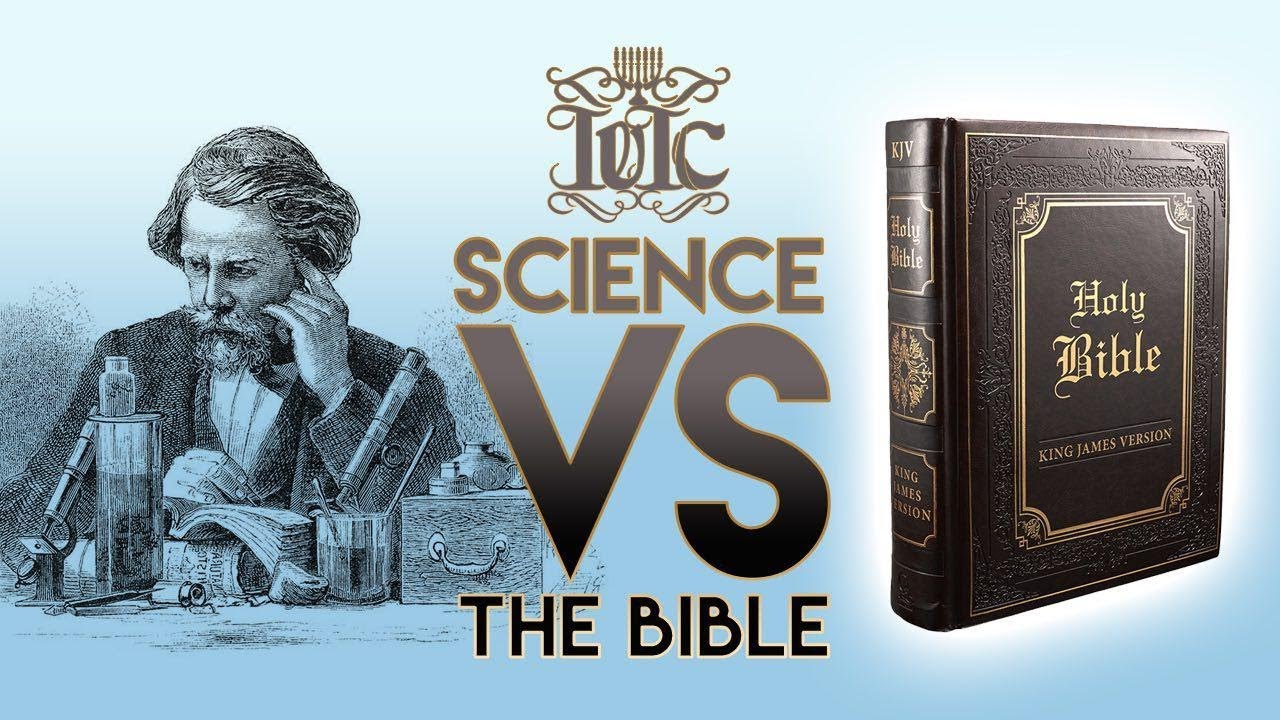
One of the biggest battles in the history of mankind is one that traces its origins all the way back to Ancient Rome and is still going strong today. The epic battle that is being referenced is the Bible vs Science. This heated battle might be described as having a David vs Goliath feel, with each side taking turns playing the role of underdog. This essay won’t go into the actual debates, with each side trying to plead their case and dismiss the other, but will focus more on how the philosophies, or thought process, shifted throughout the years.
First Conflict
As we stated above, this battle first shows itself in Ancient Rome. Christianity had a rough start in Ancient Rome; believers of Christianity faced heavy persecution, but it would eventually be accepted by Emperor Constantine in 313 AD. Ten years later, 323 AD, Christianity would be named the official religion of the Roman Empire. That is a key fact to know because the Romans would use the Bible to guide a fair amount of their thinking.

A perfect example of this is the Roman’s belief in Geocentrism, thinking that the Earth is the center of the Universe with the sun orbiting around it. They believed this because they took what the Bible said literally. There are multiple verses in the Bible that led them to believe in Geocentrism, but the main one that they used was Joshua 10:13: “And the sun stood still and the moon stayed, until the people had avenged themselves upon their enemies. Is not this written in the book of Jasher? So the sun stood still in the midst of heaven, and hasted not to go down about a whole day.”
This belief went unchallenged for a while because it was written in the scriptures, and in those days no on dared to go against the Bible or the Church. If you haven’t already guessed, that is foreshadowing for someone to do the unthinkable and challenge things. The person to do this was Galileo.

Galileo made some observations of the moon’s shape, and the craters or valleys located on it. He also observed the milky way and distant bright dots around Jupiter. All of these factored into Galileo coming to the conclusion that the earth is not the center of the Universe. He made a Heliocentrism claim, that the sun is the center of the Universe.
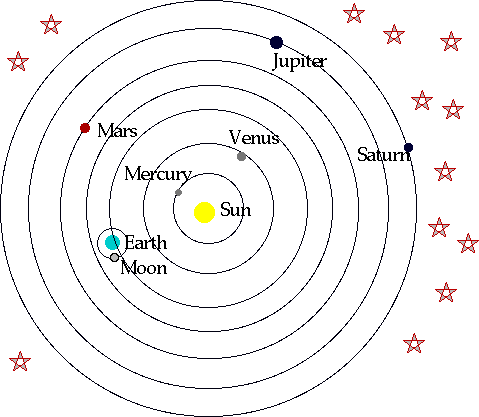
Galileo knew that this new thought process would ruffle some feathers, so he kept things on the downlow by sending private letters before going public. In one of these letters, known as the Letter to the Grand Duchess Christina, he argues that the Bible should be taken as incapable of making mistakes, when understood correctly, and it has little to say in matters of astronomy. “I think that in discussions of physical problems we ought to begin not from the authority of scriptural passages, but from sense-experiences and necessary demonstrations.” (Blackwell, pg 6)

Despite his best efforts, Galileo still faced the wrath of the church; and they forced him to publicly recant his claims. To be clear, the Church did not have scientific problems with what Galileo was claiming. They had no other evidence, or reason to think different from this claim, other than what they thought the Bible was saying. The church had a problem with him defying the final authority of the church. Galileo did as he was asked, but the damage was done and the seeds of doubt about how to understand the Bible were planted.
This is what is referred by many as the Conflict theory. “On this view, Christianity is cast in the role of the oppressive and stultifying stepmother who held back the young, reasonable, and progressive maiden of science. Then science finally broke free from the oppressive Church and steadily added to our accumulated knowledge and quality of life.” (Blackwell, pg 3)
Independence, calm before the storm
Galileo’s discovery and claims against the literal interpretation of the Bible forced a major shift in the way that Science and the Bible interacted. This interaction is classified as Independence, and is where they both go their separate ways while not intersecting. “At other times in the history of Science and Christianity, the two sides were content to go about their own business without interfering with each other.” (Blackwell, pg 8)
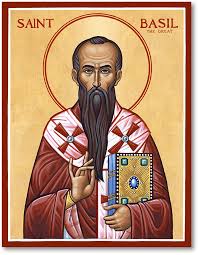
Even the authority of the Church got on board with the Independence era. Basil the Great, an influential bishop at the time, dismissed Greek science as ‘idle chatter’ which was ‘not all useful for the edification of the Church’. (Harrison, pg 12) Ambrose, the archbishop of Milan, explaining why the scriptures had little say on scientific matter, wrote, “There was no place in the words of the Holy Spirit for the vanity of perishable knowledge which deceives and deludes us in our attempt to explain the unexplainable.” (Harrison, pg 13) Saint Augustine, a major Christian philosopher, was hardly more enthusiastic, declaring that ‘the knowledge collected from the books of pagans, although some of it is useful, is also little as compared with that derived from scripture.’ (Harrison, pg 13)
This idea, of keeping the science and the Bible in their sectors, is an idea that is also shared by some in the modern day setting. In 1829, Leading theologian, Moses Stuart of Andover Seminary, stated, “God fit the world of the Mosaic narrative to the feeling, vies, and methods of expression, existing in the time of Moses… The bible was not designed to teach the Hebrews astronomy or geology.” (Goldberg, pg 28-29)
Along with this era of independence, there was also a major shift in how the bible was understood. The shift was away from the literal translation that dominated in Ancient Rome. This change in thought was highlighted by Averroes and his double truth theory. Averroes was a muslim philosopher, and one of the most important Arab thinkers of the Middle ages. “The doctrine of double truth meant that a claim could have different meanings at different levels- a literal philosophical meaning and an allegorical or figurative theological meaning.” (Blackwell, pg 9)
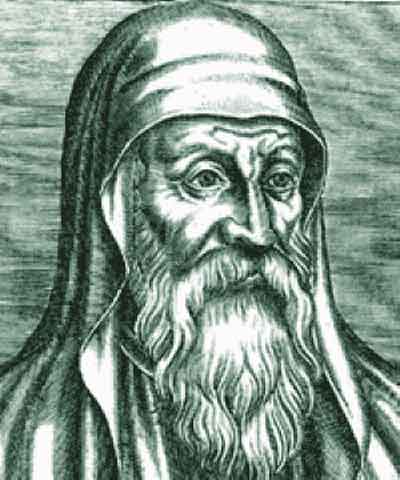
Origen of Alexandria was one of the great Christian theologians of his time and he was also on the side of getting away from a literal interpretation. Origen had argued that both the world and scripture have embedded within them potent symbols. “The relationship (between the invisible and the visibly) does not obtain only with creatures, the Divine Scripture itself is written with wisdom of a rather similar sort.” (Harrison, pg 19) Origen made a claim that certain passages of scripture have literal sense at all, and that others, when taken literally, could reasonably be dismissed as ‘absurd and impossible.’ (Harrison, pg 19)
The step away from the literal interpretation left a gap in the Bible and its relationship to the natural world. This gap was quickly filled in by the Two Books metaphor. This metaphor states that God gave mankind information or revelation through different, but coordinated sources. The first source is the Bible while the other one is the world (God’s creation). This metaphor appealed to the masses because not everyone knew how to read or had the scriptures available to them, but one didn’t know how to read to observe the beauty of God’s creation.
Multiple Christian theologians and scholars supported this metaphor. John Chrysostom was the Archbishop of Constantinople and was one of main figures to support this idea. “If God had given instruction by means of books, and of letter, he who knew letters would have learnt what was written, but the illiterate man would have gone away without receiving any benefit… This however cannot be said with respect to the heavens and every man that walks upon the earth, shall hear this voice; for not by means of the ears, but through the sight, it reaches our understanding.” (Blackwell, pg 12
It was this strong connection to the natural world and the emphasis on God’s creation that led to the biggest battle science or the Bible has ever seen.
The never ending war
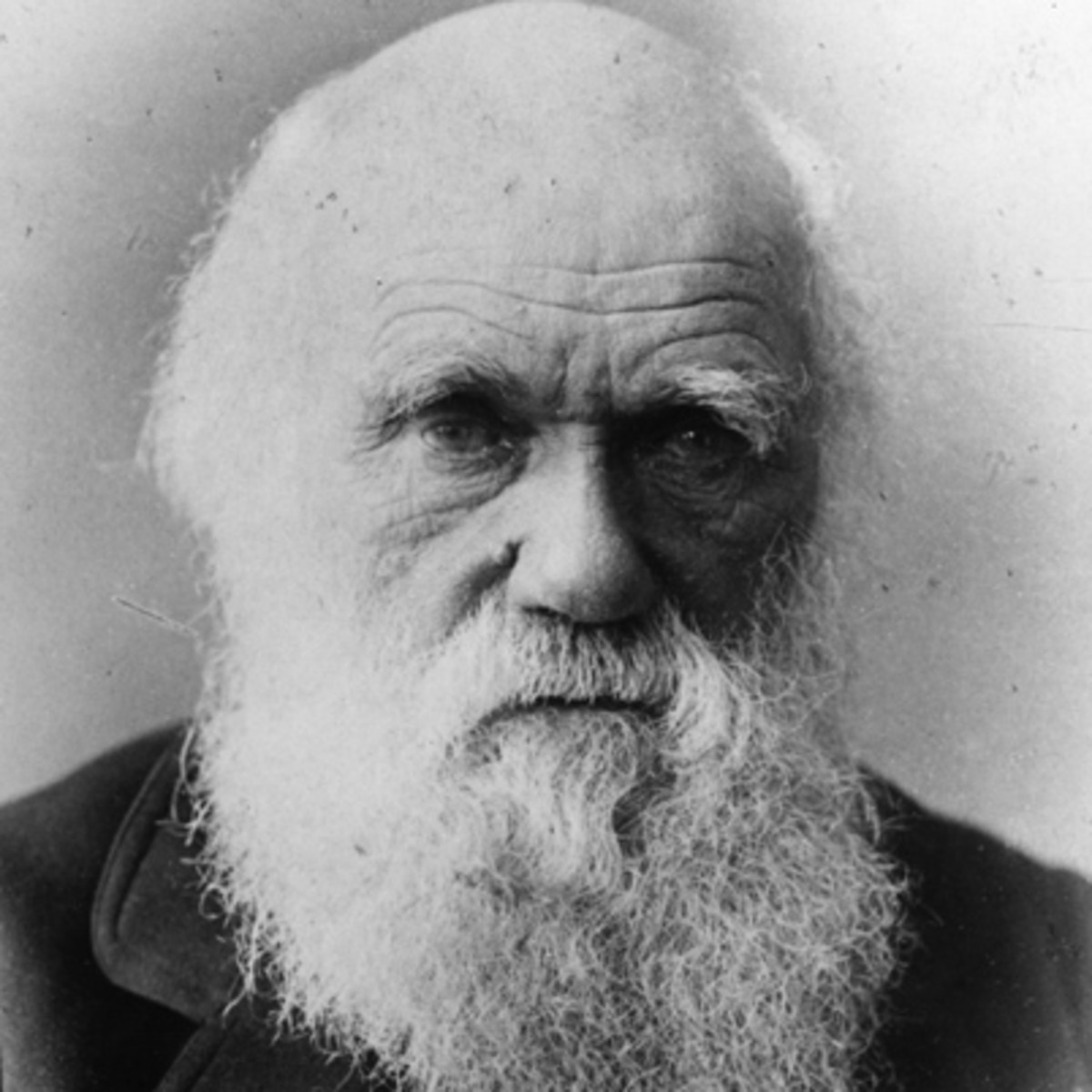
The developments of science led to advances and a wealth of knowledge about the world that we live in. This was highlighted by the Darwin’s theory of evolution. Darwin’s theory was the start of science’s direct challenge to the Bible’s account of God being the ultimate creator of the world. The challenge sparked a war between an unmovable object and an unstoppable force. Science and the Bible go head to head in a battle that is still being fought to this very day.
When we talk about Darwin’s theory of evolution it is key to know that there are plenty on both sides of the fence that have problems with the part that humans evolved from monkeys, so that doesn’t factor in this discussion. We can also throw out the tension between these two in regards to evolution. It is obvious that humans and many species of animals have changed/evolved over time, there is no possible way anyone can dispute that. The challenge that has the Bible and science at each others throat is the big bang against creation.
This battle hit the headlines in America in 1925 when Tennessee school teacher John Scopes taught evolution. The trail of John Scopes made national news and pushed this battle into the minds of the public.

Without going into too much detail the big bang theory is based on a sudden appearance of organisms that over long periods of time have evolved into life forms that is mankind. Those on the Bible side of things would counter with the big bang that science claims was God creating the earth and everything on it and the evolution that we have seen over the years is part of his intelligent design. Science would then counter by pointing out flaws in the proposed intelligent design such as the jaw not designed for all of the adult teeth a human hence, that would be the removal of ones wisdom teeth.
Another point of conflict is the age of the earth. For the earth to fit into the big bang theory the earth would needs millions of years to evolved from nothing into life as we know it today. For creation theorist they paint the earth in much younger time span. Even that has those in Christian community argued over taking the story of creation literal as God created the earth in six 24 hour days or the Gap theory which ages the earth a little more by placing a sizable gap between the first and second day in the story of creation.

With all of that said there is no way that on earth science or the Bible can prove their own theories without a shadow of a doubt and this battle with continue till the end of time. Some have voiced their opinions that the Bible and Christianity may have bitten off more than they can chew by trying to validate the Bible using scientific means. As the evangelical writer and religion professor Randall Balmer points out, confronting the public with objective evidence of the Bible literal truth is a mistake. “Paradoxically, when the Religious Right asserts intelligent design is science, it implies that faith in God is… inadequate, that it needs the imprimatur of the scientific method.” (Krattenmaker) “I rather see that religious beliefs should seek justification on the solid rocks of faith and revelation, not on scientific knowledge, which by its very nature is never definitive or forever valid. (Ayala, pg 76)
WHY CAN’T WE ALL JUST GET ALONG
With everything that has transpired between Science and the Bible it is fair that think that they trust issues with each other, but moving forward it seems best to put the past behind them. To get the most out of this relationship it seems there to be a middle ground moving forward and the first step involves each side understanding their roles. “Of course, in their search for the truth science and religion are exploring different dimensions of the human encounter with reality. Science is concerned with impersonal encounter. This is a realm in which experience can be manipulated and repeated as often as desired…. The attempt to manipulate God and put God to the test is the sinful error of magic. It is in this rich and profound realm of personal and transpersonal experience that religion pursues its quest for truth.” (Polkinghorne, pg 158)
In the end there seems to be grey area where both science and the Bible can not only coexist but thrive. “It shows that faith enables a deeper experience of reality, beyond the materialism of the modern worldview to a view that owns and reckons with all of the knowledge with which we have been endowed by both science and religious faith. It is historical criticism that enables us to place the Bible and evolution (science) together, both functioning without compromise or apology in the development of a worldview that is far richer than one alone can enable.” (Smiles, pg 56)
BIBLIOGRAPHY
Ayala, Francisco J. “Evolution vs. Creationism.” Edited by Eugenie C. Scott. History and Philosophy of the Life Sciences 28, no. 1 (2006): 71–82.
Goldberg, Steven. Seduced by Science: How American Religion Has Lost Its Way. New York, UNITED STATES: New York University Press, 1998. http://ebookcentral.proquest.com/lib/unm/detail.action?docID=865478.
Harrison, Peter. The Bible, Protestantism, and the Rise of Natural Science. Cambridge; New York: Cambridge University Press, 1998. http://site.ebrary.com/id/10451801.
Krattenmaker, Tom. “The Bible vs. science.” USA Today, 2007.
Re Manning, Russell, and Michael Byrne. Science and Religion in the Twenty-First Century: The Boyle Lectures, 2013.
Smiles, Vincent M. The Bible and Science: Longing for God in a Science-Dominated World. Collegeville, Minn.: Liturgical Press, 2011.
Stump, J. B. Science and Christianity: An Introduction to the Issues, 2017.
2445 words.